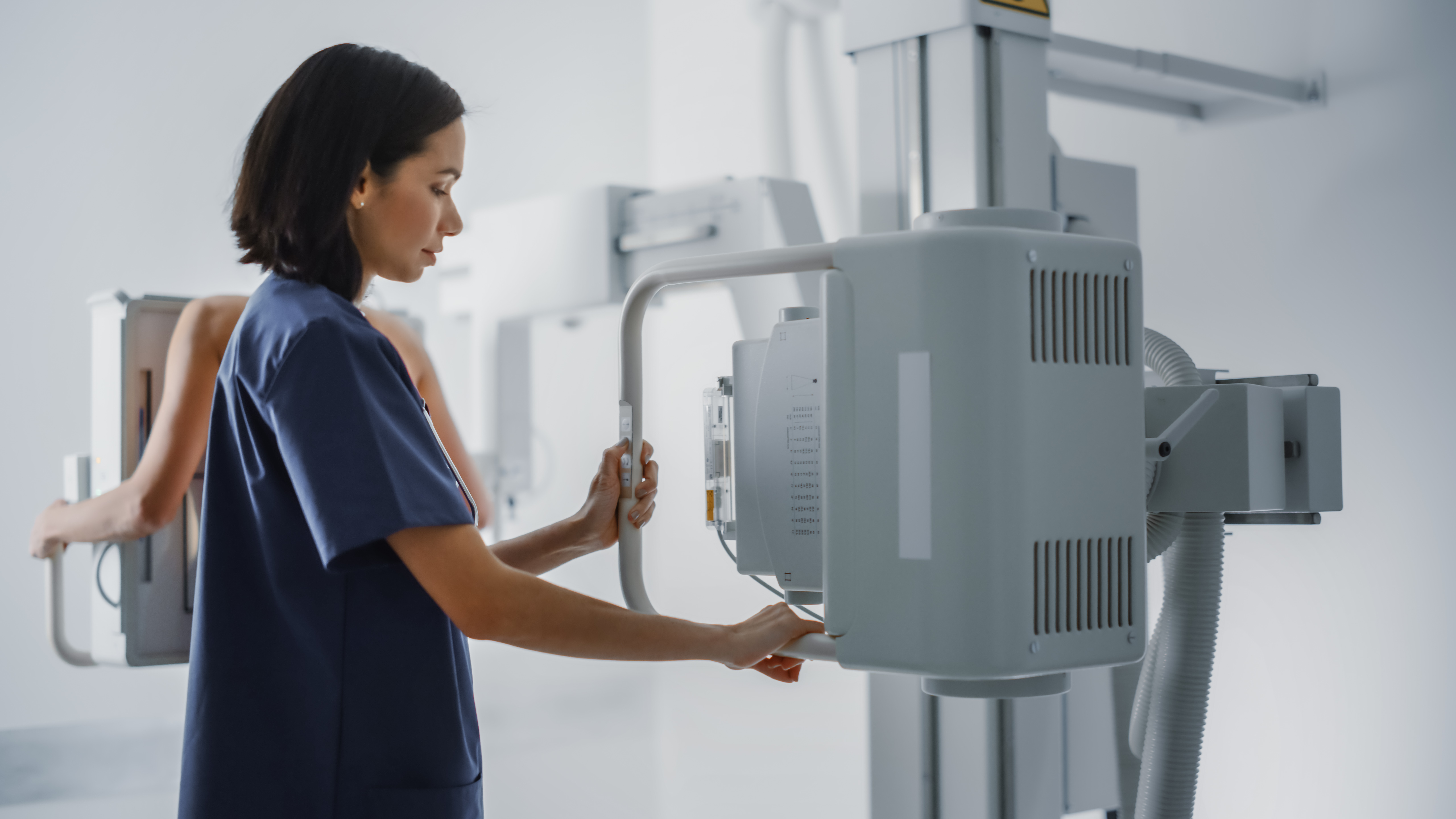
Summary
If a worker is pregnant or potentially pregnant, the dose to the unborn child must not exceed 1 mSv. To assess conformance with this limit, it is important to evaluate the workplace conditions and implement any necessary additional protective measures.
Can I continue to work if I am pregnant?
Yes, you can. Many individuals employed in industries involving ionising radiation may desire to continue their work during pregnancy. If proper guidelines are followed, the risk to the health of the unborn child is negligible. It is important to inform your employer about your pregnancy as soon as possible. Once the pregnancy has been disclosed to the employer, additional measures to protect the unborn child may need to be considered. The working conditions for a pregnant worker should be designed in a way that it is unlikely for the additional radiation dose to the unborn child to exceed 1 mSv for the remainder of the pregnancy.
What are the possible health effects?
If the radiation dose received by the foetus during pregnancy is kept below the limit of 1 mSv, the risk of health effects is insignificant.
It is important to note that the dose limit specifically pertains to the radiation dose received by the foetus, and it cannot be directly compared to the dose indicated by a personal dosimeter worn by a worker. The measurement on a personal dosimeter may overestimate the actual dose received by the foetus. In general, the dose received by the foetus from external exposure is unlikely to exceed 25 percent of the dose recorded by the personal dosimeter.
Who is responsible for your safety?
In Australia, the use of radiation sources and irradiating apparatuses is subject to regulation. Each state and territory has its own radiation safety act and regulations, which are enforced within their respective jurisdictions. ARPANSA is responsible for the enforcement of the radiation safety act and regulations for Commonwealth entities only.
Organisations and employers have specific responsibilities, which include:
- Developing, implementing, and regularly reviewing their radiation management plan.
- Ensuring regulatory compliance with relevant laws and regulations.
- Providing induction and ongoing training for workers, including contractors.
On the other hand, workers also have their own set of responsibilities, which include:
- Adhering to the radiation protection practices outlined in the radiation management plan.
- Following the legitimate instructions provided by the employer or designated radiation safety officer.
- Actively participating in radiation protection training.
How do I modify a pregnant workers duties?
The limitation on the radiation dose to the unborn child does not imply that pregnant workers must completely avoid working with radiation or radioactive materials, nor does it mean that they should be prohibited from entering or working in designated radiation areas. However, it does require their employer to thoroughly assess the exposure conditions for the pregnant worker. The nature of their employment should be such that the likelihood of experiencing elevated accidental doses and radionuclide intakes is negligible.
When an occupationally exposed worker declares a pregnancy, there are three options that are typically considered in the workplace:
- no change in assigned working duties,
- change to another area with lower radiation exposure,
- or; change to a job with no radiation exposure.
There is no universal answer that applies to all situations, and specific regulations may exist in certain jurisdictions. Ideally, the employer or radiation safety officer should engage in a discussion with the worker about their individual circumstances. Together, they can determine whether and how the worker’s duties can be adjusted. The worker should be provided information about the potential risks, local policies, regulations, and the prescribed dose limits.
Additional measures that could be considered include switching from a three-month monitoring period to a one-month monitoring period and utilising an electronic personal dosimeter (EPD) set to trigger alarms at appropriate cumulative dose and dose-rate levels.
What are the exposure limits?
In Australia, consistent dose limits have been established across all jurisdictions for both public and occupational exposure to ionising radiation. The annual limit for public exposure is set at 1 mSv, while occupationally exposed workers have an annual limit of 20 mSv.
For pregnant workers who are occupationally exposed to radiation, there is an additional restriction on the dose received by the unborn child. As specified in the Planned Exposure Code, when a pregnancy is declared by an occupationally exposed female, the working conditions of that person should be such as to ensure that the additional dose to the embryo/foetus would not exceed 1 mSv during the remainder of the pregnancy (ARPANSA 2020).
For non-ionising radiation, the regulations pertaining to occupational exposure in each jurisdiction are not as clearly defined. However, the International Commission on Non-Ionizing Radiation Protection has established protection principles that recommend pregnant workers should not be exposed above the public exposure limit.
Is it safe for occupationally exposed workers to breastfeed?
In general, workers who are exposed only to external or sealed radiation sources can typically breastfeed safely. However, for workers who handle unsealed radiation sources or have the potential for intakes of radionuclides, such as those in nuclear medicine, it may be advisable to consider additional precautions.
To determine the best course of action, it is recommended that you discuss your specific circumstances with your employer, workplace radiation safety officer, or the appropriate regulatory authority in your jurisdiction. They will be able to provide guidance and address any concerns you may have regarding breastfeeding and radiation exposure in your work environment.
Further information
- Code for Radiation Protection in Planned Exposure Situations
- ICRP Publication 84: Pregnancy and Medical Radiation
- Pregnant women | IAEA


